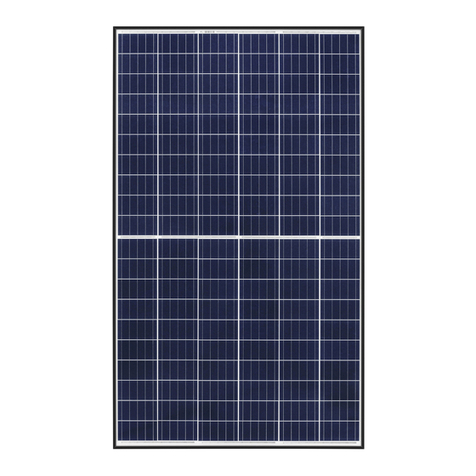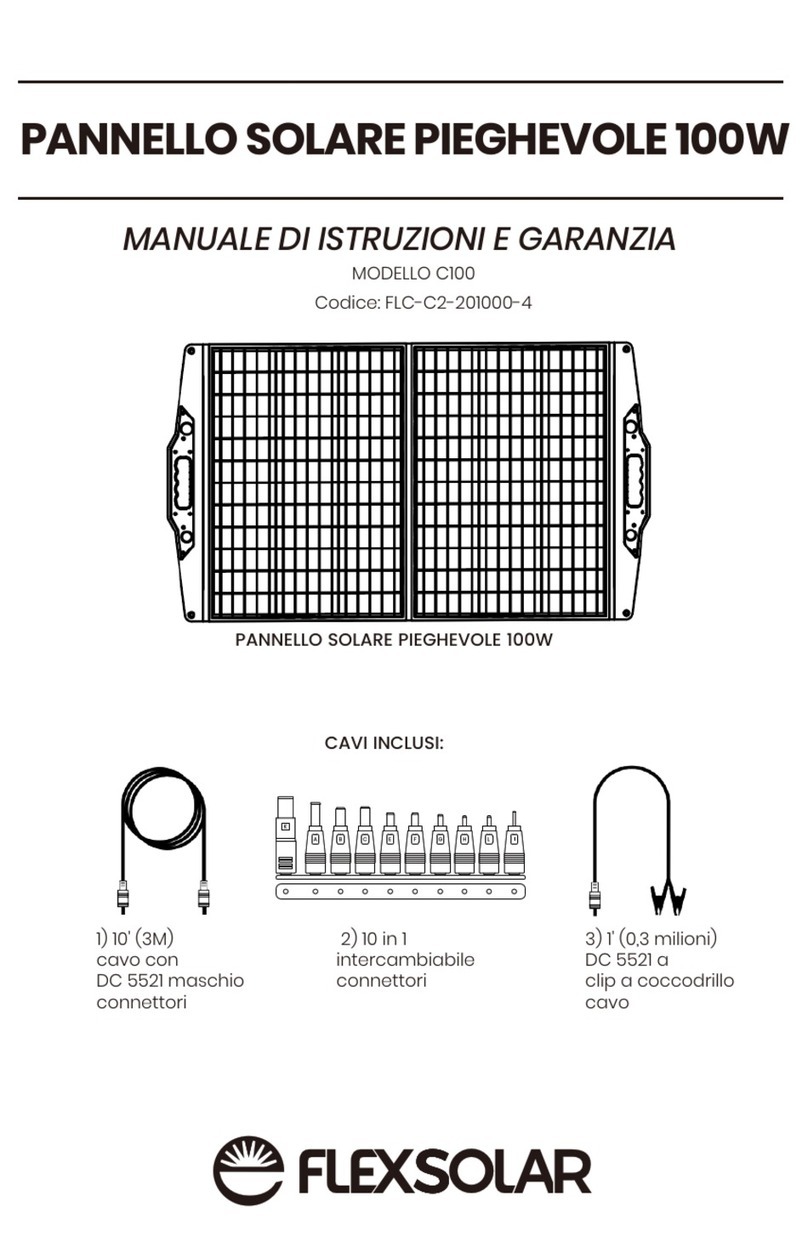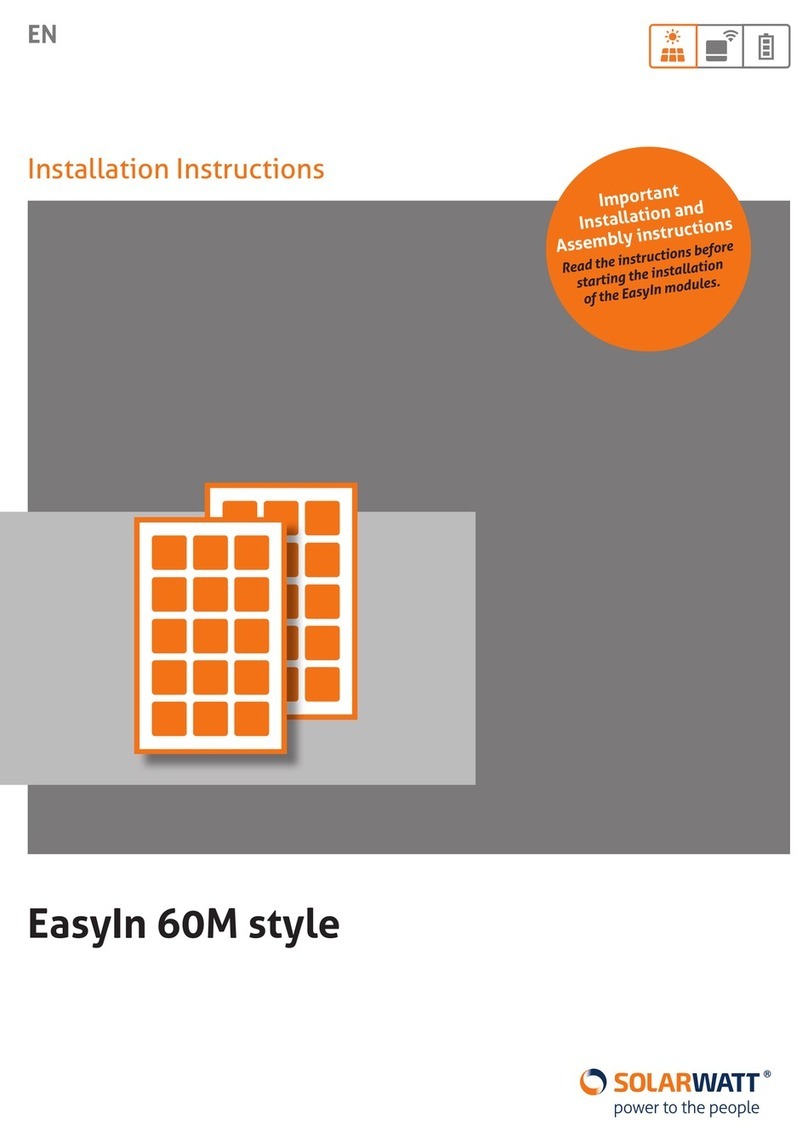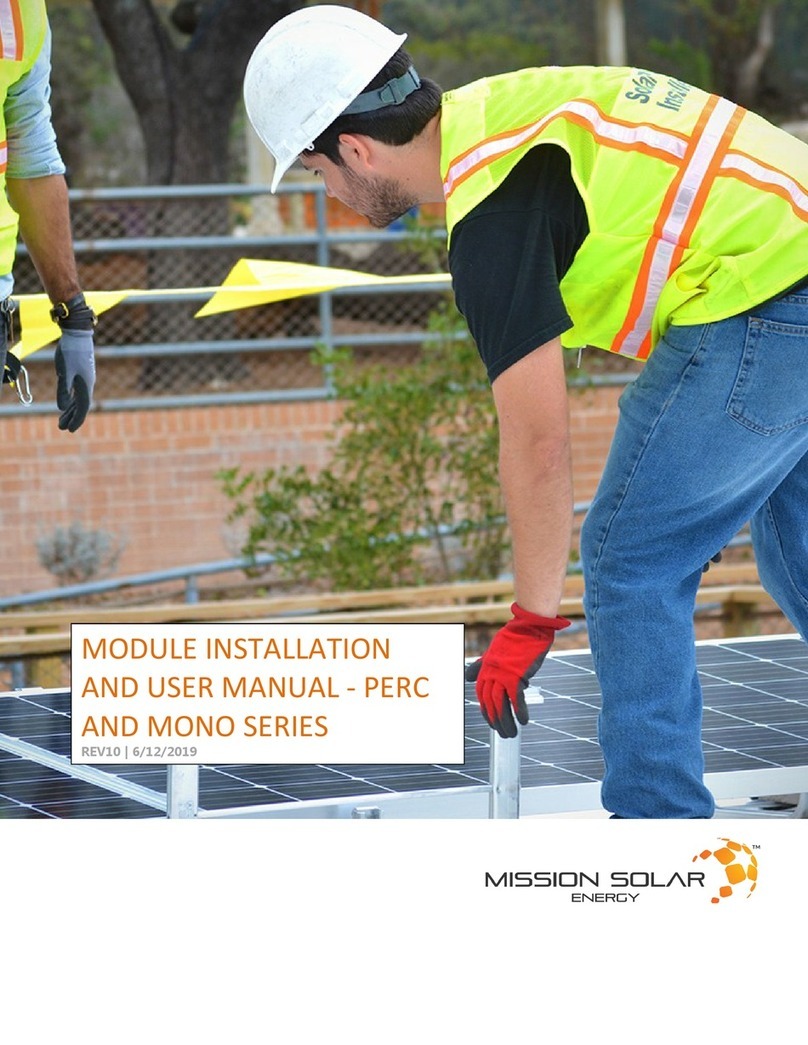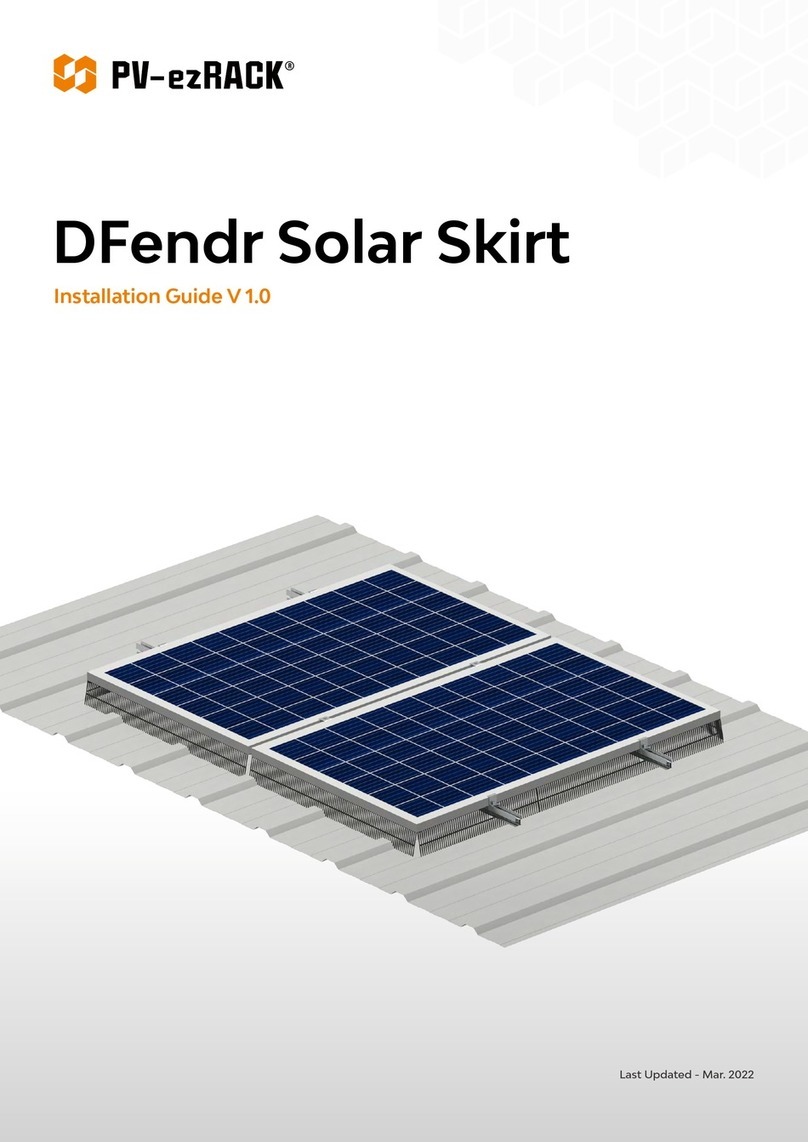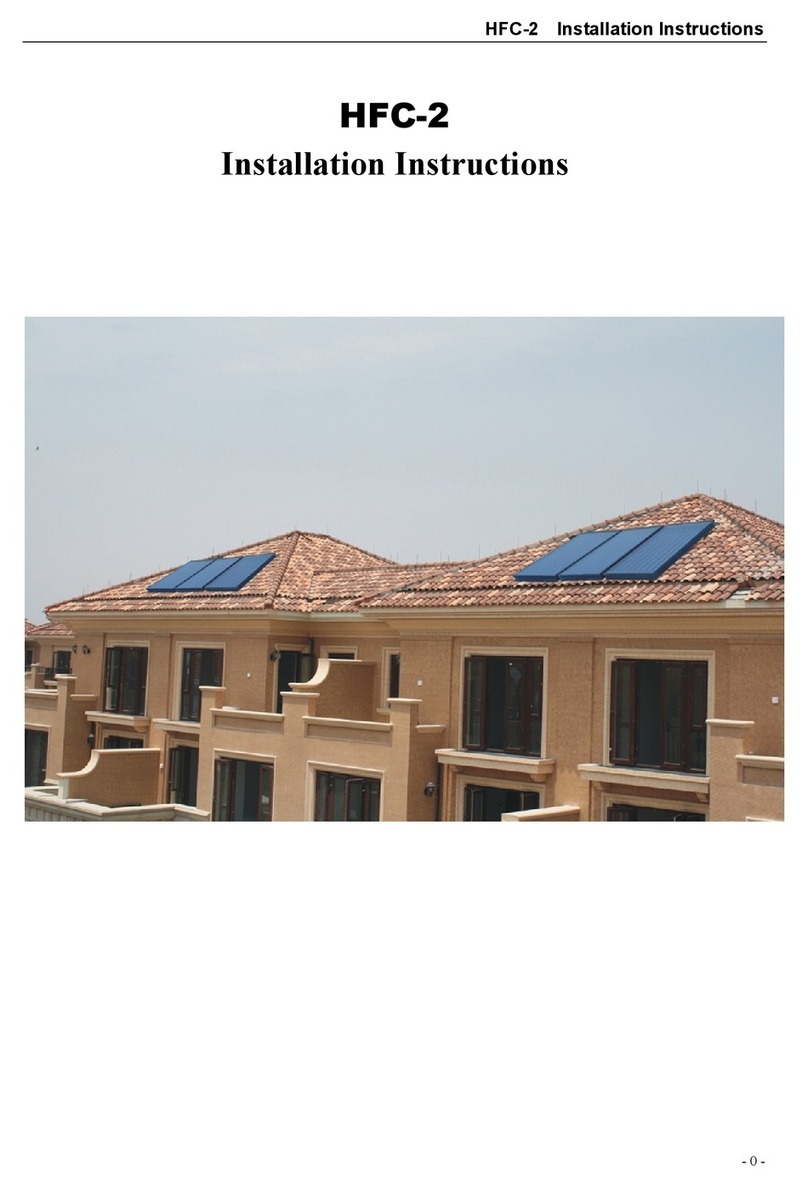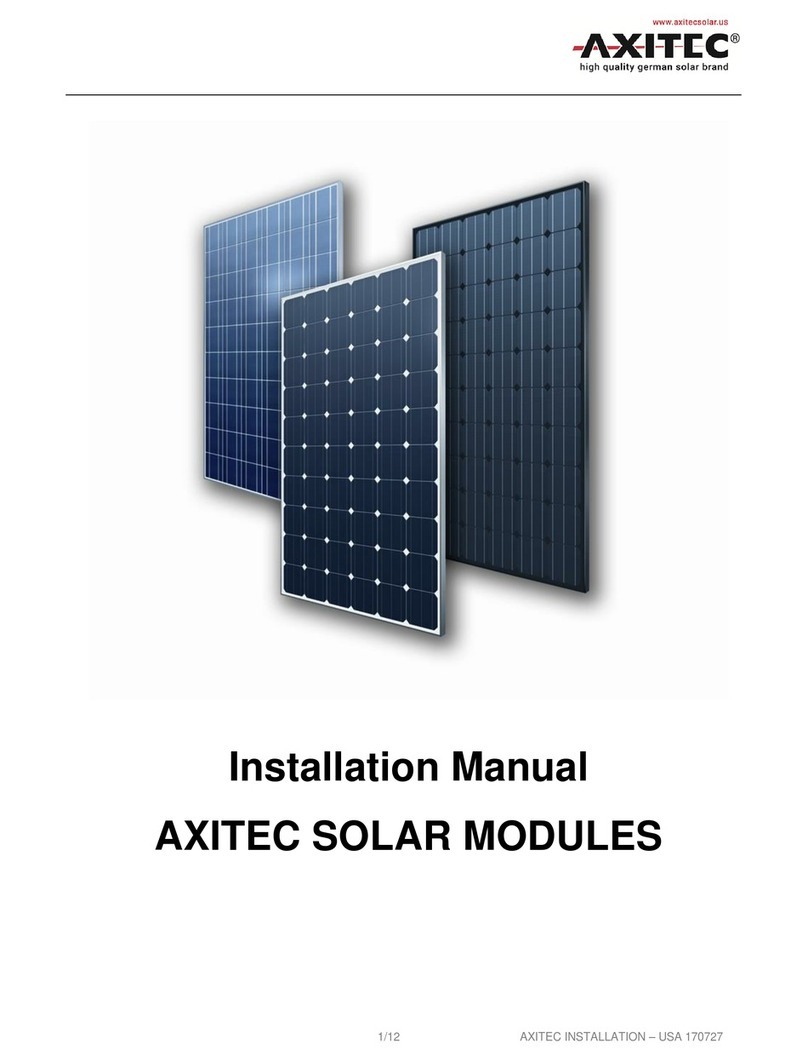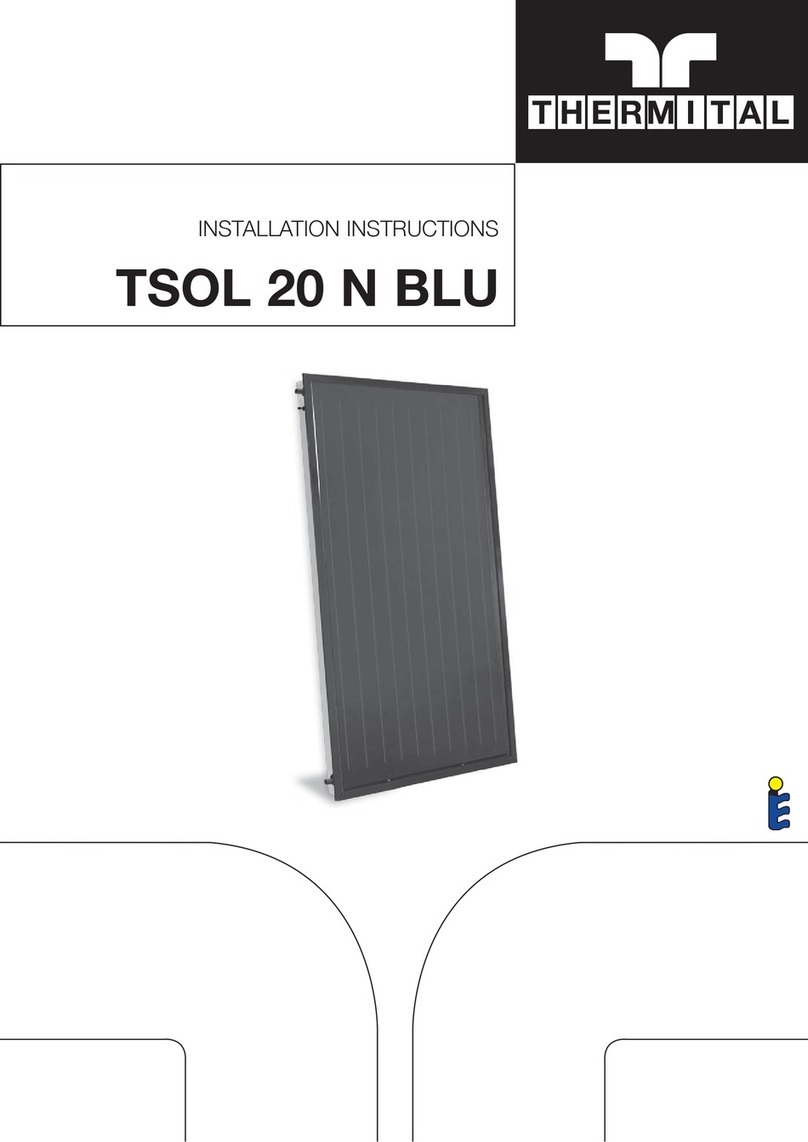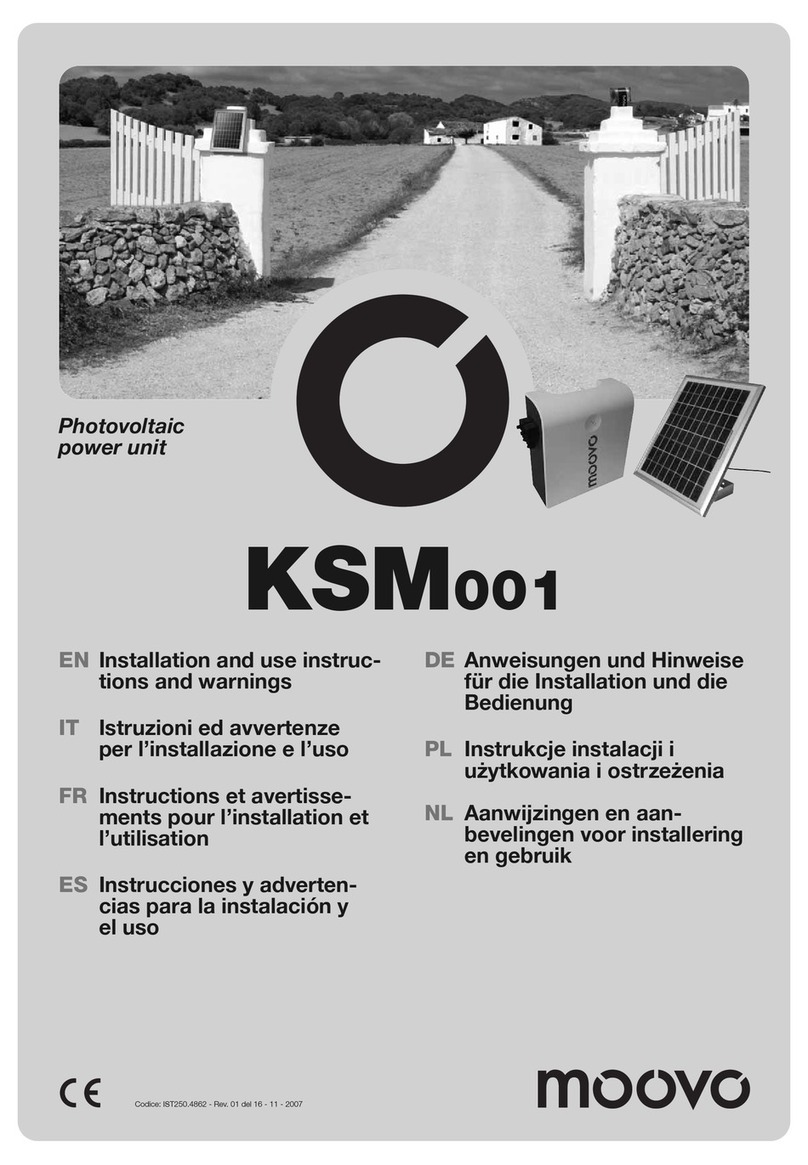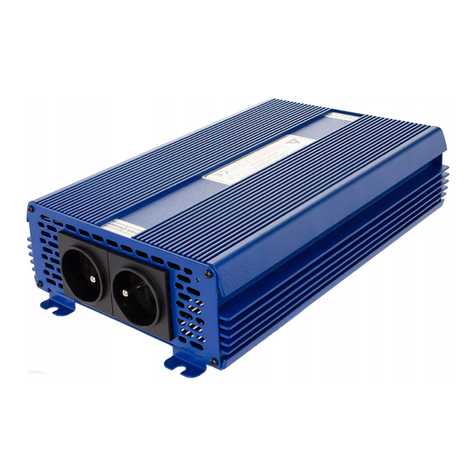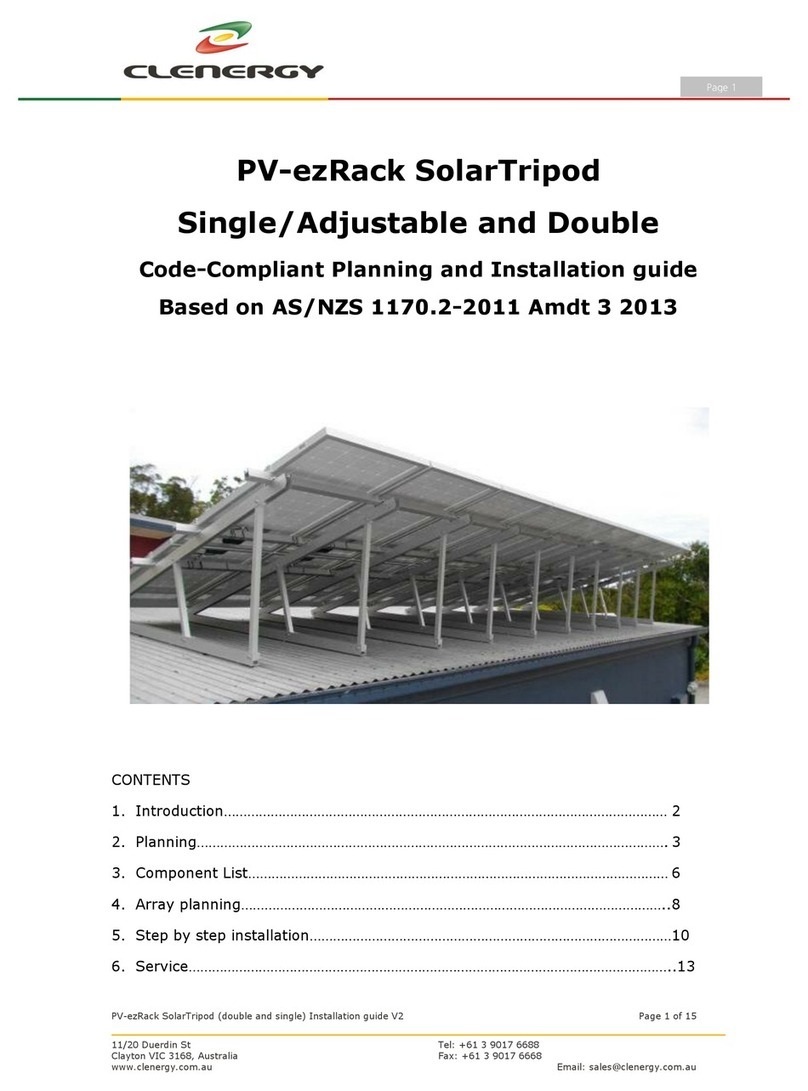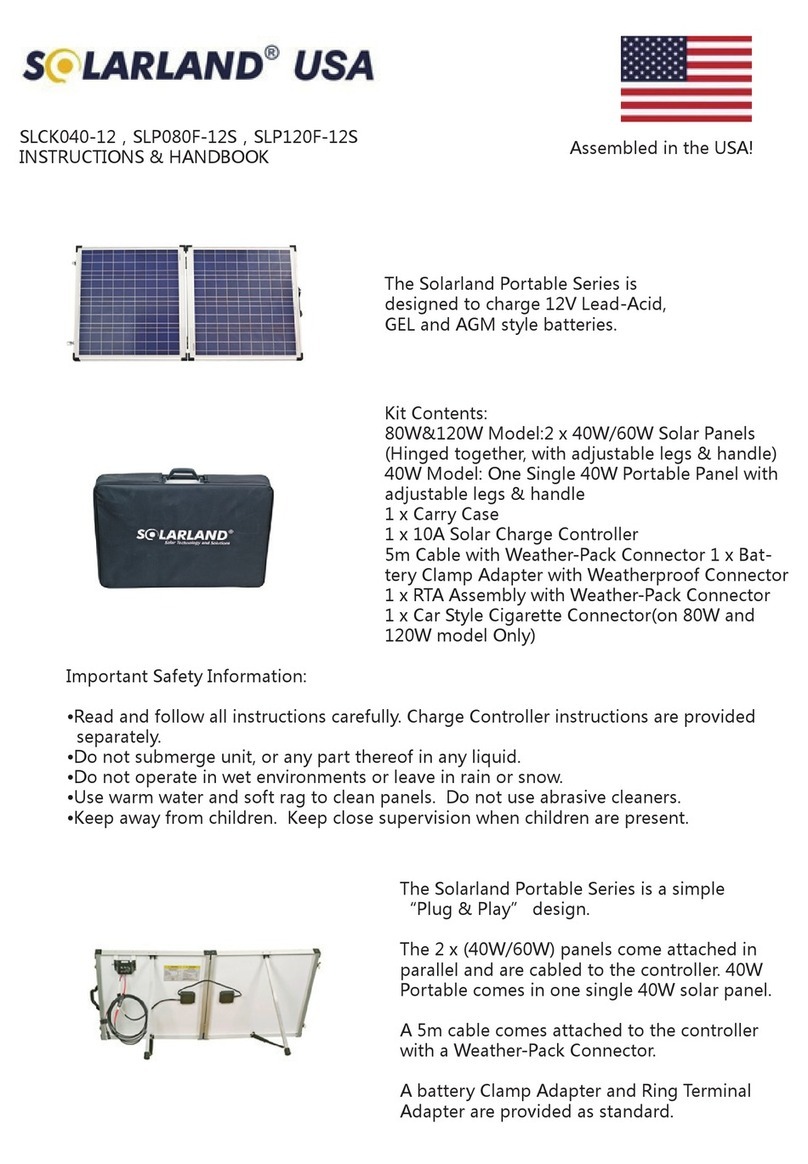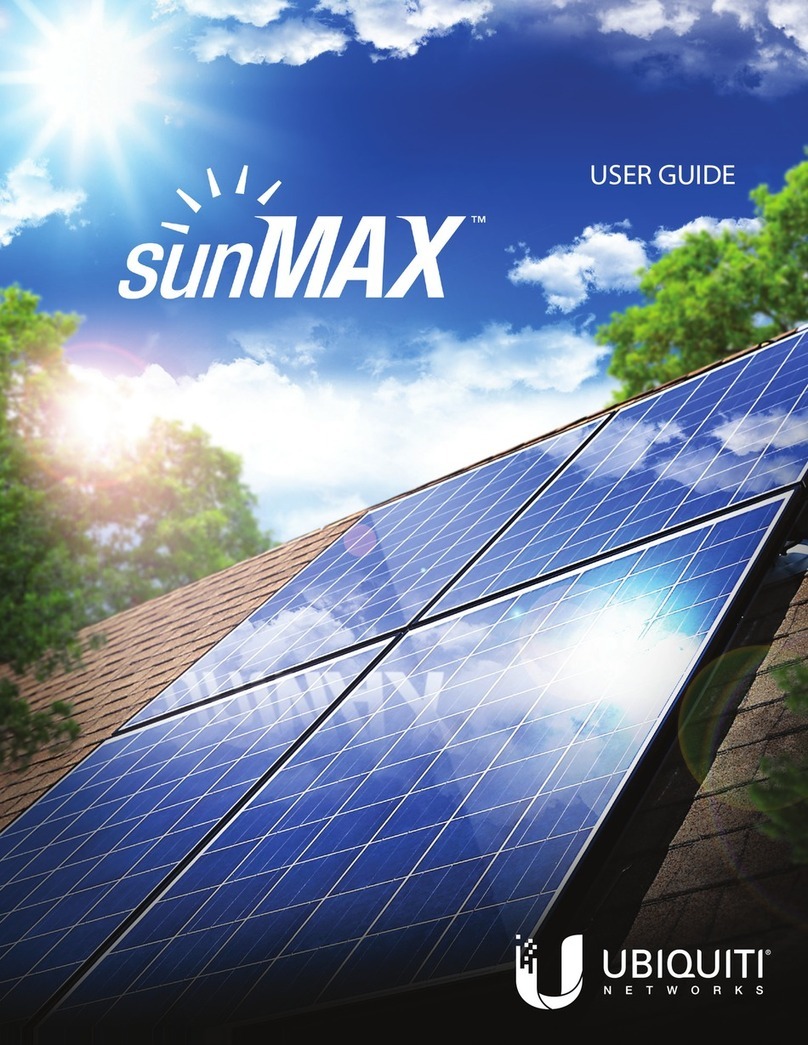
TAMESOL BUILDING A GREEN FUTURE SL
https://tamesol.com
ensure that this is the case, the open circuit voltage of the array string needs to be calculated at the
lowest expected ambient temperature for the location. This can be done using the following formula.
Max System voltage ≥N * Voc * [1 + TCvoc x (Tmin-25)]
N Number of modules in series
Voc Open circuit voltage of each module (refer to product label or data sheet)
TCvoc Thermal coefficient of open circuit voltage for the module (refer to data sheet)
Tmin The lowest expected ambient temperature
If modules are connected in series, the total voltage is equal to the sum of individual voltages. The
recommended max.
number of module (N) = Vmax system / [Voc (at STC) ×1.25×1.25]
Each module has two industry standard 90°C sunlight resistant output cables, each terminated with
plug & play connectors. The PV Wire cable are 12AWG in size. This cable is suitable for applications
where wiring is exposed to direct sunlight. TAMESOL requires that all wiring and electrical
connections comply with the appropriate National Electrical Code.
The minimum and maximum outer diameters of the cable are 5 to 7mm (0. 038 to 0.076 in2).
For field connections, use at least 4mm2 copper wires insulated for a minimum of 90°C and
sunlight resistance with insulation designated as PV Wire.
The minimum bending radius of the cables must be 43mm (1.69in).
4.4 Grounding
Where universal grounding modules (nuts, bolts, star washers, lock washers, flat washers and
similar parts) are used to connect the grounding/connection devices shown, the fittings used must be
made in accordance with the requirements of the grounding equipment manufacturer.
Please refer to local and national safety and electrical codes for the required grounding and
connecti on requirements. If grounding is required, please provide the recommended type of
connector or equivalent for the earth wire.
If grounding is required, the grounding wire must be properly fixed on the assembly frame to ensure
the required electrical connection (the grounding hole is shown in Figure 4).
5 Maintenance
Clean module glass surfaces regularly with water and a clean sponge or cloth, and use a mild,
non-abrasive cleaner to remove stubborn dirt. It is not recommended to use water containing
minerals to clean modules.
Check electrical, grounding and mechanical connections every six months to ensure they are clean,
safe, undamaged and not corroded. If you have any questions, please consult a professional.
